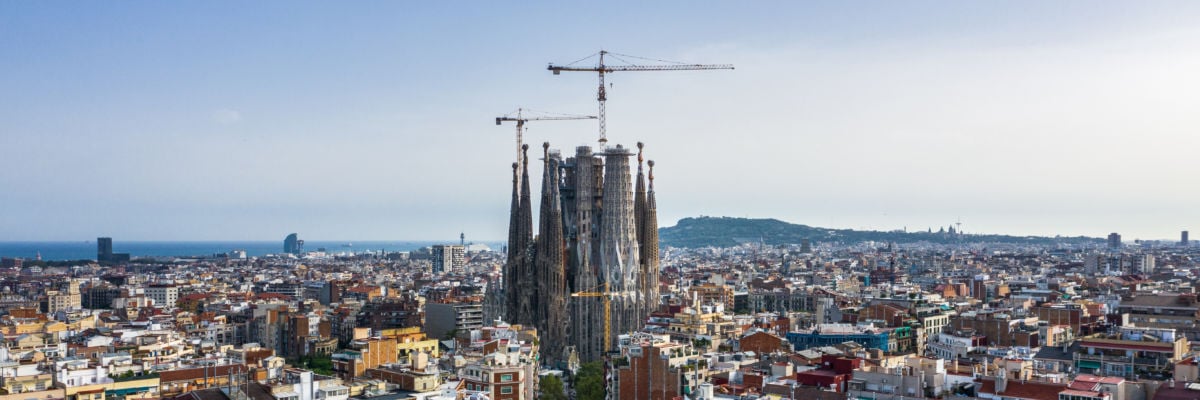
Pope St. John Paul II wrote twenty-one years ago,
[We should not] overlook the positive contribution made by the wise use of the cultural treasures of the Church. . . . Artistic beauty . . . a sort of echo of the Spirit of God, is a symbol pointing to the mystery, an invitation to seek out the face of God made visible in Jesus of Nazareth (Ecclesia in Europa 60).
This observation would not have surprised Catholics in previous centuries. When John Paul II said it, however, it was an intervention into a highly controversial, and sometimes embittered, debate, which still rages today.
The Catholic Church is the owner, in a moral sense and often legally as well, of a staggering quantity of art: music, paintings, buildings and their contents. Since the mid-twentieth century, there has been a widespread movement in the Church that repudiates this patrimony to a greater or lesser extent, claiming that it cannot, or can no longer, be used to spread the gospel. Great and small works of art in churches have been hidden, sold off, or destroyed.
This process began in the 1950s. Following the Second Vatican Council, justification was sought in council texts. Contemporary artistic styles should be given “free scope” (Sacrosanctum Concilium 123), “noble beauty” should be preferred to “sumptuous display” (124), the number of devotional images should be “moderated” (125), and art should be favored that was adapted to the “needs and customs” of different regions (128).
None of this amounts to a mandate to replace fine and much-loved art with felt banners, childish cartoon-like figures, or abstract designs, but these things were putatively justified by these phrases, or else in terms of the need to facilitate the reformed liturgy.
One factor at work in this was a change of artistic fashion. The Romantic artistic movement, allied with neo-Gothic architecture, both of which looked to Medieval art for inspiration, had dominated church decoration from the 1840s to the 1940s, and vast quantities of ecclesiastical art, and the buildings they were in, were in these styles at the time of Vatican II. They remained popular with ordinary Catholics, but many influential people in the Church were looking for an excuse to replace them with something more up to date.
Another factor was the erosion of the sense of the sacred. Most churches at the eve of Vatican II, partly because they were filled with art in a bygone, unfashionable style, were distinctive, and instantly recognizable as places of worship.
This was more true in 1960 than it would have been in 1860, when Romantic paintings filled fashionable drawing-rooms, and neo-Gothic architecture was being used to build railway stations and museums, or indeed in the fourteenth century, when churches and banqueting halls were built in the same style. But whatever the reason, the result was a useful one, since the sight of pointed windows and the like immediately put the worshiper in mind of the sacred function of the building.
On the other hand, a common theme of post-Vatican II liturgical thinking was that it was actually better if one’s liturgical experience was closer to the everyday—the idea being that the graces of the liturgy could the more easily be carried back into the everyday world. (Think of chalices made of pottery rather than precious metals.) The logical conclusion of this attitude would be to exclude all sense of the sacred, and above all to get rid of art and (ideally) architecture that create a sense of the sacred.
For these two reasons, not only was much local sacred art destroyed or sold off, but the Church’s immense patrimony of world-class religious art became practically unusable, even for purposes such as decorating Vatican postage stamps or the covers of newly printed missals. Devotional art of all periods up to the middle of the twentieth century attempted to create a sense of awe, to inspire contemplation, and to evoke the sacred, which is all contrary to the very conscious new artistic project: to use a modern style that was not specifically sacred.
This new way of thinking was widespread, but it was never official. It began to be more vigorously opposed by John Paul II, not only in the context of the “way of beauty” already quoted, but in his project to re-sacralize the liturgy. In 2001, two years before the document quoted above, the Congregation for Divine Worship had published new guidelines on liturgical translation. The previous ones, found in Comme Le Prévoit (1969), had stressed ease of comprehension. The new document, Liturgiam Authenticam, took a different approach, encouraging “the development of a sacral vernacular, characterized by a vocabulary, syntax, and grammar that are proper to divine worship” (47). In 2011, a new English translation finally appeared, based on the new priorities.
Liturgiam Authenticam changed the debate about the liturgy by insisting that it should evoke the sacred, and John Paul II reinforced the point with his remarks on art. If the words of the liturgy should create a sacred atmosphere, then it may be appropriate to use some of that old art again, which was designed to do exactly the same thing. This set the scene for the physical restoration of many churches that had been damaged by over-hasty updating following Vatican II.
There are still influential voices in the Church that decry the very notion of the “sacral.” Many people have asked, in the context of the abuser-artist Fr. Marko Rupnik, why his art continues to be preferred to the great masterpieces of the ages of faith sitting in the Vatican museum when it comes to finding images for Vatican websites and publications. One reason is that his child-like images may be considered decorative and didactic, but they do not evoke the sacred.
Truly “sacral” art, however, is what is needed to place us in the best position to pray—in John Paul II’s words, art that is “an invitation to seek out the face of God.”



